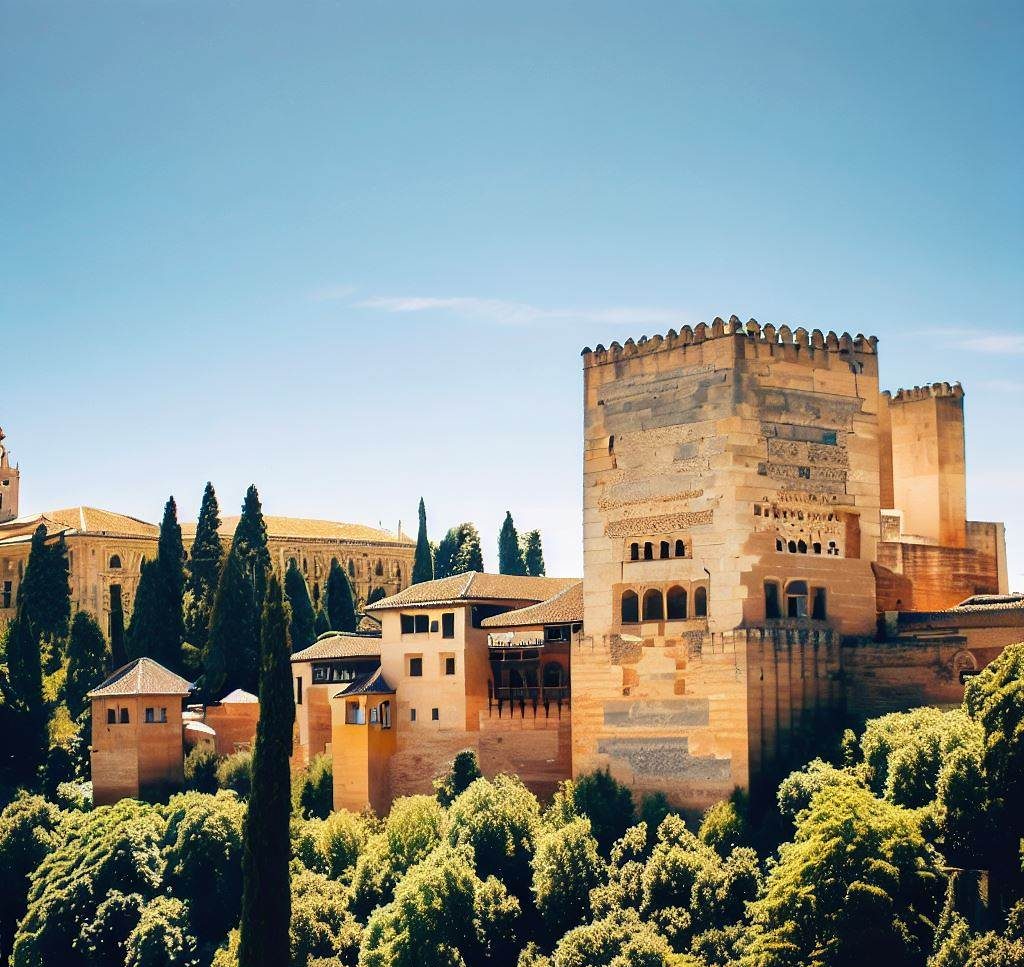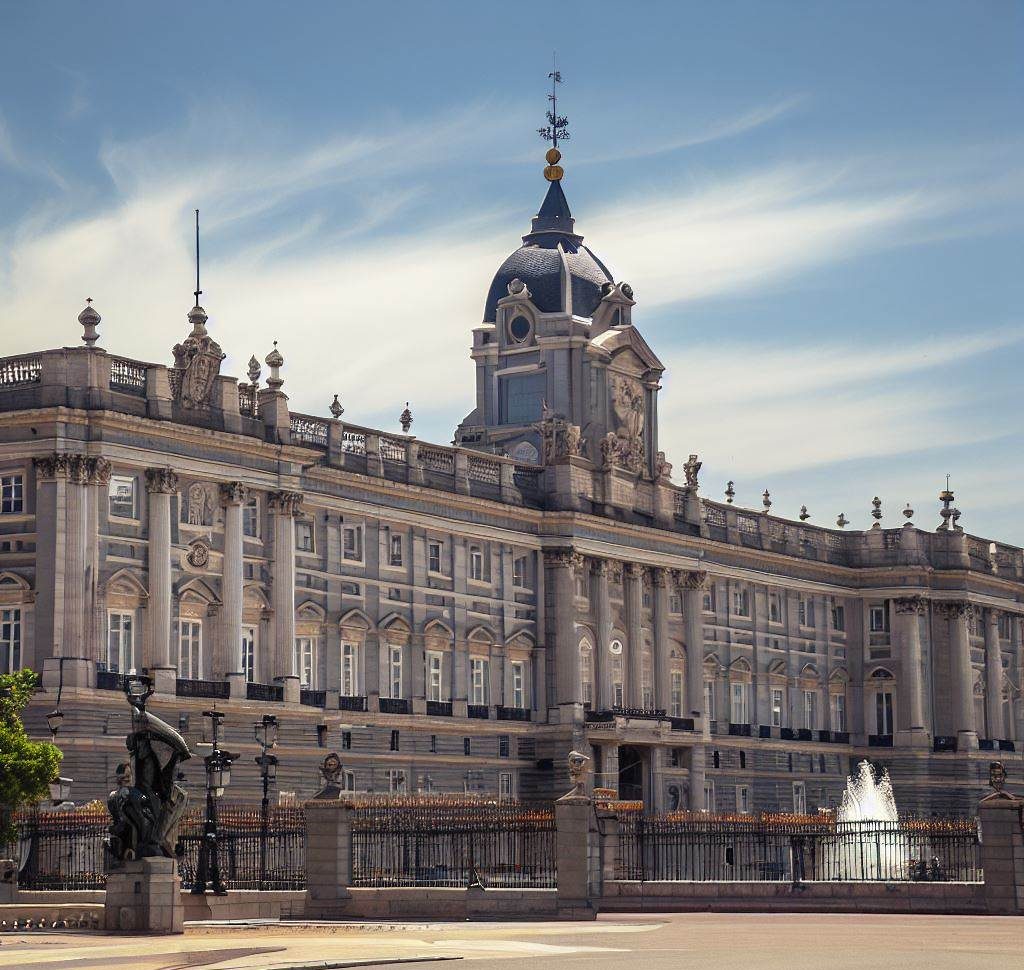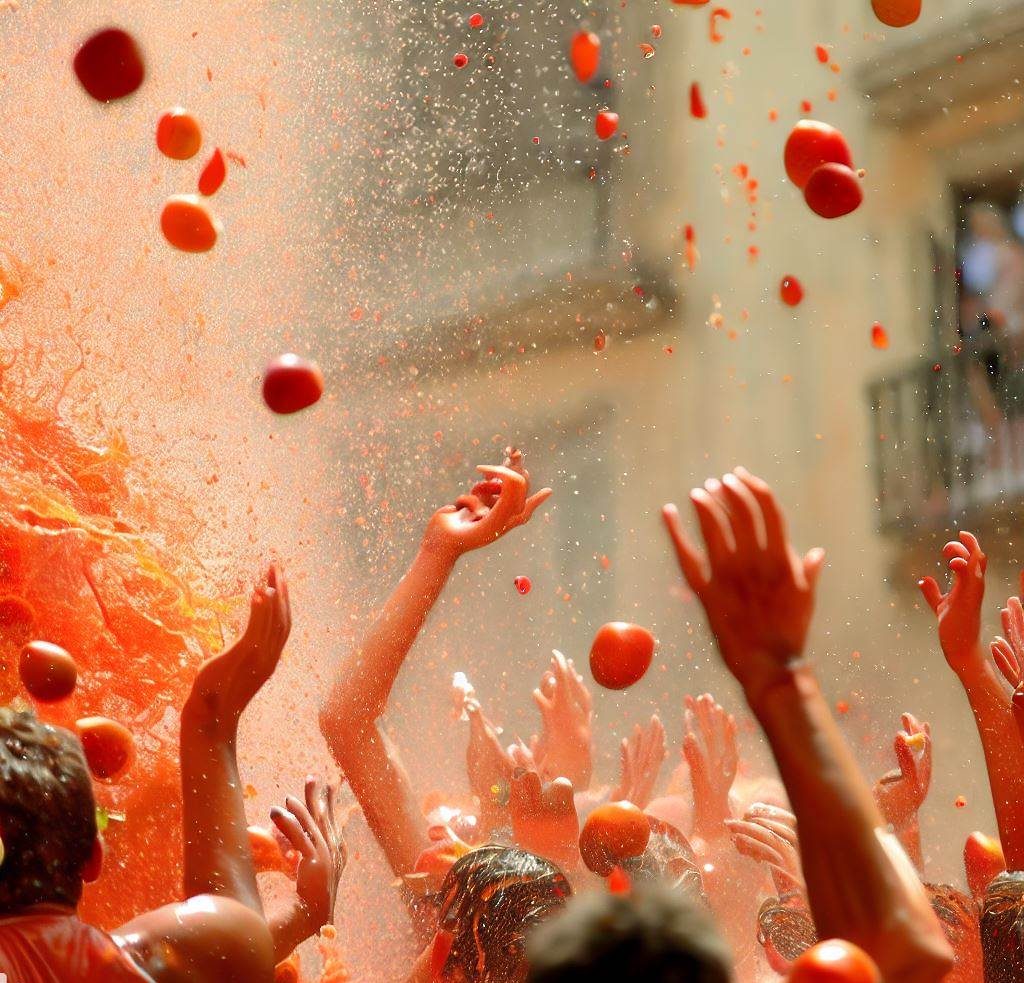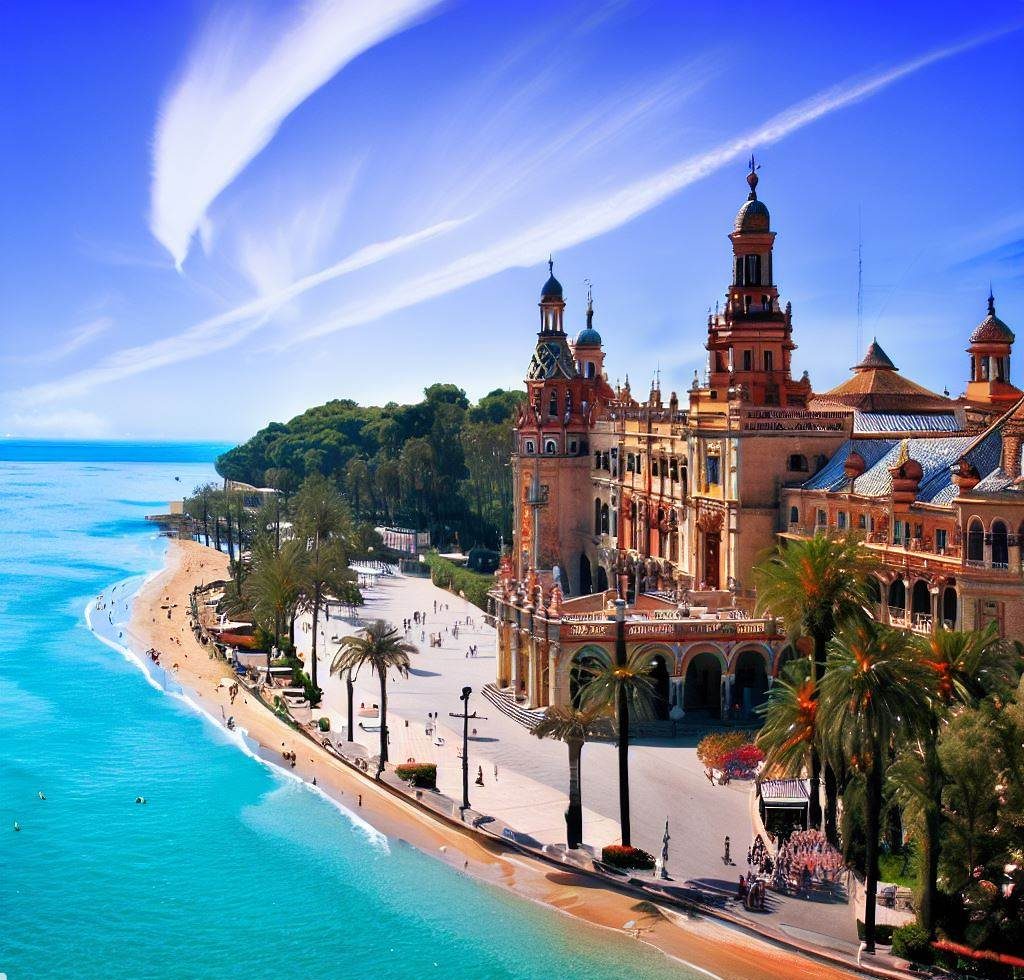Spain, the land of flamenco, tapas, and siestas, boasts an unmatched cultural and historical heritage. But what really stands out when you think of Spain? Nestled in the heart of Western Europe, Spain stands as a vibrant tapestry of history, art, and culture.
Its geographical diversity, spanning from rugged mountain ranges to sun-kissed coastlines, is paralleled only by its rich cultural heritage. Who hasn’t been captivated by the tales of matadors, the rhythm of flamenco, or the allure of its centuries-old festivals? Spain’s name often evokes images of medieval castles set against azure beaches, spirited football matches, and streets alive with fiestas that continue till the break of dawn.
If you’re interested in exploring more about what makes Texas famous, check out this informative article on the Texan Music Scene.
The culinary delights, notably tapas and paella, have found admirers across the globe, while Spanish wines, particularly from the regions of Rioja and Ribera del Duero, have set benchmark standards for oenophiles. Furthermore, Spain’s contribution to the world of art, with stalwarts like Picasso and Gaudí, has been unparalleled.
As we dive into this exploration, we’ll discover that Spain isn’t just known for its tangible assets; it’s the spirit, the passion, and the warmth of its people that truly define it.
Contents
- 1 Alhambra in Granada
- 2 Park Güell in Barcelona
- 3 The Sagrada Familia in Barcelona
- 4 The Royal Palace of Madrid
- 5 Running of the Bulls in Pamplona
- 6 Throw Tomatoes at La Tomatina
- 7 The Picturesque Beaches of Costa del Sol
- 8 The Ancient City of Toledo
- 9 The Mezquita in Córdoba
- 10 The Historic Center of Seville
- 11 Flamenco Dance Class in Seville
- 12 Wine-Tasting Tour in La Rioja
- 13 Rich and Diverse Spanish Cuisine
- 14 The Gothic Quarter in Barcelona
- 15 The Picasso Museum in Barcelona
- 16 The Alcázar of Seville
- 17 The Reales Atarazanas in Málaga
- 18 The Medieval Town of Ronda
- 19 Tapas Crawl Through Madrid
- 20 Conclusion
Alhambra in Granada

Who hasn’t heard of the Alhambra? Nestled atop the hills of Granada, this Moorish fortress offers intricate designs, peaceful gardens, and breathtaking views of the city. A stroll here feels like stepping into a fairy tale.
The Alhambra, a gem seated in the heart of Granada, is a testament to Spain’s rich Moorish history. Its name, derived from the Arabic “Al-Qal’a Al-Hamra” (The Red Fortress), hints at its russet walls that stand proud against the backdrop of the Sierra Nevada mountains. If you’re interested in exploring NJ’s famous aspects, you might also want to learn about what Oklahoma is known for. Check out this informative page on Tales of Travelers to discover more about the cultural and historical significance of Oklahoma.
This sprawling palace complex, built predominantly in the mid-13th century, weaves a tale of Islamic art and architecture, featuring intricate arabesques, serene courtyards like the Patio of the Lions, and reflective water features that juxtapose the arid surroundings.
As visitors traverse its corridors, they are enveloped in an aura of bygone grandeur and artistic brilliance. The Alhambra isn’t just a historical monument; it’s a poetic expression carved in stone and tile, capturing Spain’s layered past.
Park Güell in Barcelona
Barcelona, the Catalan capital, is a tapestry of architectural wonders, and Park Güell stands as one of its most iconic threads. Conceived by the legendary Antoni Gaudí, this public park is a kaleidoscope of vibrant mosaics, whimsical structures, and panoramic vistas of the cityscape stretching to the Mediterranean Sea.
Initially intended as a housing site, the project transformed into a magical urban oasis. Gaudí’s touch is evident in the serpentine benches, gingerbread house-like entrances, and the famed dragon fountain, all bearing his signature Modernisme style.
A UNESCO World Heritage Site, Park Güell isn’t just a park; it’s a journey into Gaudí’s imagination, offering a dreamlike experience to its visitors.
The Sagrada Familia in Barcelona
The Sagrada Familia stands as a testament to both architectural grandeur and spiritual devotion in the heart of Barcelona. Conceived by the unparalleled genius of Antoni Gaudí in the late 19th century, this awe-inspiring basilica remains one of the most iconic symbols of Catalonia’s rich artistic legacy.
With its towering spires reaching ambitiously towards the heavens, intricate facades narrating biblical tales, and the play of light within its vast, ornate interiors, the Sagrada Familia is more than just a building; it’s an evolving masterpiece.
Although over a century has passed since its foundation stone was laid, the basilica remains under construction, embodying Gaudí’s belief that his client, God, was not in a hurry. Every inch of this architectural marvel invites contemplation and wonder.
The Royal Palace of Madrid

The Royal Palace of Madrid, known in Spanish as Palacio Real, stands as a monumental symbol of Spain’s rich history and its regal past. Located in the heart of Madrid, this grandiose edifice is the largest royal palace in Western Europe by floor area.
Its magnificent façade is matched only by the splendor of its interiors, which house invaluable pieces of art, intricate tapestries, and ornate furnishings. Originally built in the 9th century as a fortress, the current structure dates back to the 18th century and has witnessed the reigns of various Spanish monarchs.
Today, while it remains the official residence of the Spanish Royal Family, they use it primarily for state ceremonies, making it a popular attraction for visitors worldwide.
Running of the Bulls in Pamplona
Thrill-seekers from around the world converge in Pamplona every July for the adrenaline-pumping event known as the “Running of the Bulls.” This intoxicating blend of adrenaline, tradition, and revelry has made it one of Spain’s most iconic and controversial events.
If you’re a fan of exhilarating experiences like this, you might also be interested in exploring the wonders of Vermont. Known for its stunning natural beauty, outdoor adventures, and unique cultural attractions, Vermont offers a different kind of thrill. Discover more about Unveiling Vermont’s Wonders at Tales of Travelers.
Held annually during the San Fermín festival in July, this heart-pounding spectacle involves releasing six bulls to sprint through the city’s cobbled streets, chasing daring participants aiming to demonstrate their courage and agility. Drawing visitors from across the globe, the event is not just about the thrilling run; it’s steeped in deep-rooted cultural significance.
However, it’s also a topic of debate, given concerns over animal welfare and participant safety. Yet, for many, the pulsating rhythm of hooves and exhilarating atmosphere make it an unmissable Spanish experience.
Throw Tomatoes at La Tomatina

Buñol turns red every August, thanks to the world’s largest tomato fight. Want to join in the messy fun? Pack an old shirt! Nestled in the heart of the Valencian town of Buñol, Spain, lies an annual event that’s not just colorful but downright messy and uproarious: La Tomatina.
A tradition since 1945, La Tomatina has transformed from a simple local gathering into a globally renowned festival that sees participants hurling tomatoes at one another in a joyous, good-humored frenzy. It’s not just about the act of throwing; it’s an embodiment of communal celebration and uninhibited fun.
As trucks unload heaps of ripe tomatoes, streets turn into rivers of red, and for one day, Buñol becomes the epicenter of a delightful, tomato-tinted chaos. This is the world’s largest food fight and an experience like no other, illustrating Spain’s penchant for vibrant, unique celebrations.
The Picturesque Beaches of Costa del Sol
Nestled along Spain’s southern coastline, the Costa del Sol, aptly named “Sun Coast”, is a haven of golden sandy beaches, shimmering azure waters, and serene sunsets. Stretching over 150 kilometers, this sun-kissed coast boasts a myriad of beaches, each with its unique charm.
From the bustling beaches of Marbella, dotted with chic beach clubs and sunbathers, to the tranquil shores of Nerja, where towering cliffs cast shadows over secluded coves, the Costa del Sol is a paradise for beach enthusiasts. If you’re also a nature lover, you might want to explore destinations like Utah’s Famous National Parks to witness the breathtaking beauty of the American Southwest.
The gentle lapping of waves, paired with the scent of the salty sea breeze and the distant hum of seagulls, offers an idyllic escape from the hustle and bustle of daily life.
The Ancient City of Toledo
Toledo, once Spain’s capital, offers a mix of Christian, Muslim, and Jewish history, reflected in its churches, mosques, and synagogues. Perched high above the Tagus River, Toledo is a living tapestry of history and culture that dates back to the Bronze Age.
Often referred to as the “City of Three Cultures,” Toledo is an emblematic testament to the coexistence of Christian, Muslim, and Jewish communities throughout the Middle Ages. Its winding cobbled streets, ancient walls, and plethora of churches, mosques, and synagogues tell tales of epochs gone by, making it an immersive time capsule.
Once the capital of the Visigothic Kingdom and later significant in the histories of both Al-Andalus and Castile, Toledo’s multifaceted heritage and well-preserved architectural wonders have rightfully earned it a spot on the UNESCO World Heritage list.
The Mezquita in Córdoba
Once a mosque, now a cathedral, the Mezquita is renowned for its alternating red and white arches and intricate mihrab. Nestled in the heart of Spain’s Andalusian region lies the Mezquita of Córdoba, an architectural marvel that stands as a testament to the area’s rich tapestry of history.
Originally constructed as a mosque during the Islamic rule in Spain, it was later converted into a cathedral following the Reconquista. This breathtaking edifice masterfully intertwines Islamic and Christian architectural elements, showcasing the harmonious blend of cultures that once coexisted in the region.
Its most iconic feature, the forest of alternating red and white arches, creates a hypnotic effect, captivating visitors from around the globe. The Mezquita isn’t just a building; it’s a poignant reminder of epochs gone by, where art and spirituality converged to create a masterpiece.
The Historic Center of Seville
Cobblestone streets, medieval buildings, and the smell of orange blossoms define Seville’s historic center. Seville, the capital of Spain’s Andalusia region, is celebrated for its rich tapestry of history and culture. The heart of this vibrant city lies in its historic center, a mesmerizing maze of narrow, winding streets echoing tales of Roman, Moorish, and Christian pasts.
Here, every cobblestone and plaza tell stories of bullfighters, flamenco dancers, and ancient traditions. Majestic cathedrals stand alongside ornate palaces, bearing testament to the city’s grandeur. The scent of orange blossoms lingers in the air, as the distant strum of a guitar serenades visitors.
Steeped in a mix of architectural wonders and cultural treasures, the historic center of Seville invites travelers to step back in time and immerse themselves in its timeless charm.
Flamenco Dance Class in Seville
Experience the passion of flamenco in its birthplace. Don the heels, feel the rhythm, and let your soul dance! Seville, the heartland of Andalusia, has long been celebrated as the birthplace of the passionate art form known as flamenco. This dance, with its fiery moves, intense rhythm, and soulful melodies, epitomizes the rich tapestry of Spanish culture.
Imagine the echoing sound of heels tapping, the swift swish of vibrant dresses, and the profound emotion expressed in every gesture.
To truly immerse oneself in Seville’s culture, attending a flamenco dance class is not just a tourist activity—it’s a rite of passage. Whether you’re a seasoned dancer or someone with two left feet, such classes offer a unique opportunity to connect with Spain’s age-old traditions, bringing you closer to the pulse of its spirited soul.
Wine-Tasting Tour in La Rioja
Nestled in the northern stretches of Spain, La Rioja stands as the country’s wine-making heartland, offering an unparalleled viticultural experience. This region, with its undulating vineyards and ancient bodegas, has been crafting wines for centuries, achieving global acclaim primarily for its rich reds.
A wine-tasting tour here is not just about sipping exquisite wines, but also about diving deep into a tradition that intertwines with the local culture.
As the sun casts golden hues over the vine-clad landscapes, visitors embark on a journey, moving from one winery to another, learning about the meticulous processes, from grape selection to fermentation. La Rioja promises an immersive experience, tantalizing the palate while educating the mind on the art of winemaking.
Rich and Diverse Spanish Cuisine
Dive deep into the culinary world of Spain, and you’re met with a tantalizing tapestry of tastes and traditions. From the rugged mountains of the north to the sun-soaked coasts of the south, every region boasts its distinct flavor, shaped by centuries of history and cultural amalgamation.
Whether it’s the sumptuous seafood paella of Valencia, the smoky notes of Andalusian gazpacho, or the indulgent sweetness of Basque pintxos, Spanish cuisine is a celebration of both innovation and time-honored techniques.
Each dish tells a story, reflecting the country’s diverse landscape and the rich tapestry of cultures that have influenced its kitchen. If you’re curious about the culinary diversity of different regions, Texas stands out not just for its food but also for its remarkable Texan wildlife diversity.
Exploring the Lone Star State’s cuisine is like embarking on a gastronomic voyage, where you can savor the flavors of its diverse cultures. To learn more about what Texas is known for, including its incredible Texan wildlife diversity, visit the page on Tales of Travelers: Texan wildlife diversity.
The Gothic Quarter in Barcelona
Wander through narrow alleys, discover hidden plazas, and soak in centuries of history in Barcelona’s Gothic Quarter. Steeped in history and bursting with charm, the Gothic Quarter (Barri Gòtic) stands as the heart of Barcelona’s old city.
Wandering its labyrinthine alleys and narrow cobblestone streets is like taking a journey back in time, where medieval architecture meets the vibrancy of modern-day urban life. Each corner of this district tells tales of Roman settlements, Jewish heritage, and the grandeur of the Middle Ages.
Characterized by its towering gothic cathedrals, secluded plazas buzzing with activity, and hidden remnants of ancient Roman walls, the Gothic Quarter is not just a testament to Barcelona’s rich past, but also a lively hub of culture, cuisine, and commerce today. Exploring this area promises a sensory feast, ensuring an unforgettable experience for every traveler.
The Picasso Museum in Barcelona
Delve deep into the world of Pablo Picasso and witness his artistic evolution across five adjoining medieval palaces. Nestled in the heart of Barcelona’s historic El Raval district, the Picasso Museum stands as a monumental testament to the enduring legacy of one of the 20th century’s most influential artists, Pablo Picasso.
This museum, housed within five medieval palaces, boasts an extensive collection of over 4,000 works, tracing Picasso’s artistic journey from his early sketches as a prodigious youngster to his groundbreaking innovations in Cubism.
Visitors are given a rare glimpse into the artist’s intimate relationship with Barcelona, a city that played a pivotal role in shaping his formative years. This institution is not just a museum; it’s a narrative, interweaving the story of a genius with the vibrant tapestry of a city he loved.
The Alcázar of Seville
A fusion of Christian and Moorish architecture, this palace is a visual treat with its intricate mosaics and lush gardens. Nestled in the heart of Seville, the Alcázar stands as a testament to centuries of cultural interweaving and artistic evolution.
Originally a Moorish fort, it’s a breathtaking blend of Islamic, Gothic, Renaissance, and Baroque styles, reflecting the myriad rulers who embellished it over the ages. Surrounded by labyrinthine gardens, ornate courtyards, and reflective pools, the Alcázar isn’t just a palace, but a journey through Spain’s rich history.
From the intricately detailed mosaics gracing its halls to the serene whisper of its fountains, every corner of this magnificent place tells a tale of grandeur, conquest, and beauty.
If you’re interested in exploring Utah’s famous landmarks, you’ll find that a visit here isn’t just about witnessing remarkable architecture; it’s about immersing oneself in Spain’s living past.
For even more iconic landmarks and destinations in Utah, don’t forget to check out Utah’s famous landmarks on TalesofTravelers.com, where you can discover what this unique state is known for.
The Reales Atarazanas in Málaga
Situated in the heart of Málaga, the coastal city that gleams under the Andalusian sun, the Reales Atarazanas stands as a silent testament to the city’s rich maritime history.
This ancient shipyard, whose name translates to “The Royal Shipyards,” dates back to the 14th century and offers a glimpse into Málaga’s pivotal role in the Mediterranean’s maritime activities.
With its imposing Gothic arches and robust stone walls, the structure exudes a sense of bygone majesty. Over the centuries, the Reales Atarazanas has transitioned from a bustling shipbuilding center to a cultural and exhibition space, making it not just a historical monument, but also a hub for contemporary artistic endeavors.
A visit here is a journey through time, revealing stories of sailors, craftsmen, and the ever-evolving city of Málaga.
The Medieval Town of Ronda
Perched dramatically atop the El Tajo gorge in Spain’s Andalusia region, Ronda is a mesmerizing medieval town that effortlessly fuses natural beauty with historic grandeur.
Its towering stone bridges connect the town’s two halves, offering awe-inspiring views of the steep cliffs and the snaking Guadalevín River below. If you’re interested in exploring similar picturesque landscapes and experiencing Indiana’s artistic heritage, you’ll find it fascinating to learn about what Indiana is known for.
Indiana’s artistic heritage is renowned for its rich cultural contributions, and you can delve deeper into this topic by visiting this page: famous “Indiana’s artistic heritage“.
Ronda’s illustrious past dates back to the Celts and Romans, and its myriad landmarks—from ancient bathhouses and palatial townhouses to its famous bullring—narrate tales of the civilizations that thrived here.
As the sun casts a golden hue on its stone walls and cobblestone streets, Ronda exudes an enchanting ambiance, beckoning travelers to step back in time and immerse themselves in its rich tapestry of history.
Tapas Crawl Through Madrid
Madrid, the pulsating heart of Spain, is not just renowned for its rich history and magnificent architecture, but also for its vibrant culinary scene.
One of the city’s most cherished culinary traditions is the tapas crawl, locally known as “tapeo.” Venturing from one bustling tavern to another, both locals and tourists indulge in an array of bite-sized delights, each offering a unique burst of flavor.
From sizzling garlic prawns and spicy patatas bravas to the classic Spanish omelette, each tapa tells a tale of the region’s gastronomic heritage. Paired with a chilled glass of local wine or a crisp cerveza, a tapas crawl in Madrid is more than a meal; it’s a flavorful journey through Spanish culture.
Conclusion
Spain is not just a country; it’s an emotion, a symphony of experiences that resonate deeply with every visitor. It gracefully marries the past and the present, offering a rich tapestry of history, art, festivities, and culinary delights.
From the intricate Moorish patterns in Alhambra’s palaces to the rhythmic beats of a flamenco performance in Seville, from the spirited shouts during La Tomatina to the serene sunsets over Costa del Sol’s beaches, Spain truly encapsulates a multitude of worlds within its borders.
As our journey through Spain’s famous offerings concludes, one realizes that this nation’s charm doesn’t just lie in its landmarks and events, but in the heartbeat of its streets, the smiles of its people, and the stories whispered by its winds.

